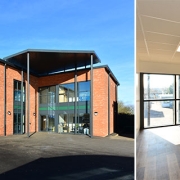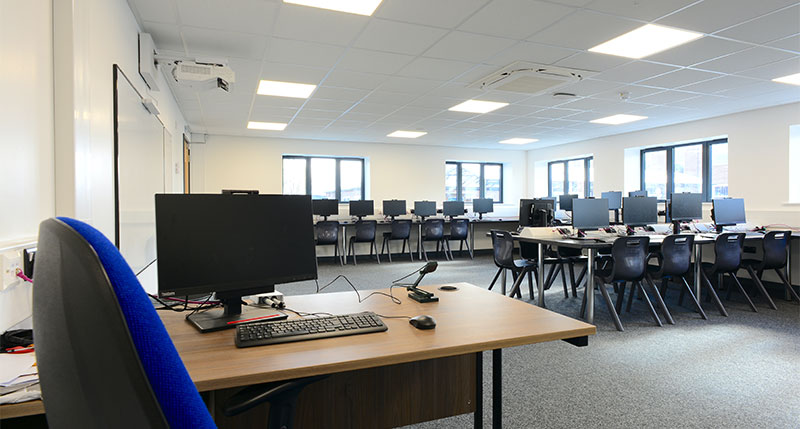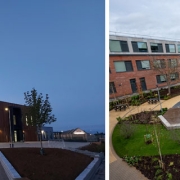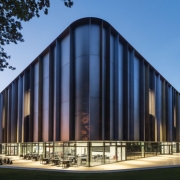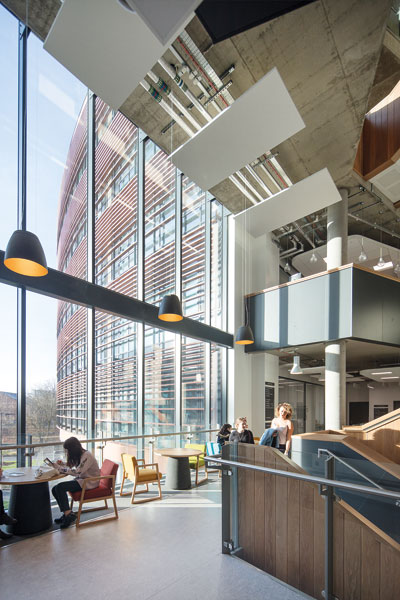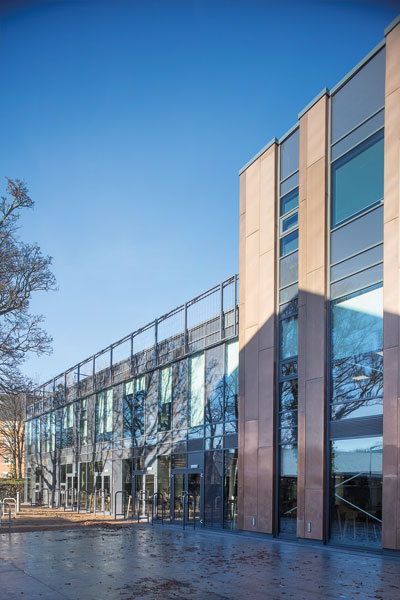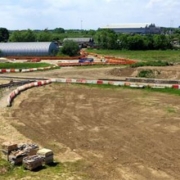Students and teachers at Martin High School are enjoying a beautiful new classroom block at their school in Anstey, Leicestershire.
Classroom space for the Humanities department was limited. The department’s classrooms were far too spread out across the site, which was not the ideal learning environment to deliver the desired curriculum. The school sought to replace an old, small pre-fabricated block of classrooms with a modern bespoke building to serve as a centralised Humanities hub.
Through a competitive tender process overseen by Surveyors 2 Education, Wernick Buildings was awarded the project by the Lionheart Educational Trust.
A two-storey modular building was a more cost-effective solution for the Trust. The client remarked that a modular option allowed them to get more value for money across all project operations. It was also a more time-efficient choice. Unlike traditional buildings, a modular classroom block is manufactured and assembled in a controlled factory environment in a matter of weeks, drastically reducing the time spent onsite.
Wernick provided a full turnkey solution, complete with the demolition of the existing building and a full internal and external services package. To ensure that the building not look out of place, the block was designed to match the existing architecture of the surrounding buildings.
Each of the building’s 20 modules were manufactured in Wernick’s dedicated facility in South Wales. The offsite manufacture of the building modules in a factory environment gave the project several advantages. Firstly, the building could be constructed at the same time as the foundations were being prepared onsite, dramatically reducing disruption on the school site, and allowing students to continue learning without interference. Manufacture was also not affected by site conditions like the weather, making the programme even more reliable. This was vitally important for the school, with the building deadline being set within the academic school year.
Wernick’s manufacturing process was also a sustainable option for the client. The controlled conditions used to build modular units means almost no waste goes to landfill. Everything is filtered for recycling, and what can’t be recycled is shredded and distributed to a local “energy from waste” plant.
Once complete, the modules were transported to the school in Leicestershire via lorry. Due to the tight footprint of the site, the client worked closely with building crews to make sure there was sufficient space to proceed. The Wernick team proposed using a retaining wall to assist with the tight logistics of the area. Modules were then craned into position and bolted together to form the core of the building. A robust brick-skin cladding was later added to the core to give a more traditional construction appearance which perfectly matched the existing campus buildings.
Construction on the project was completed in October 2022. Both students and teachers continuously say that the block “looks like a traditional building.” External features include a large frontal canopy, an exterior staircase and curtain walling. It also has been outfitted with an energy-efficient heating and ventilation system. The interior is equipped with a customised, technology-rich IT suite, five spacious classrooms and several staff offices. Other indoor features include toilets and accessible toilets on each floor, an accessible platform lift next to the stairs, and storage areas.
Users of the building say they are enjoying the new teaching block. Oliver Willis, Project Manager at the Lionheart Educational Trust said,
“the feedback from the building’s users has been very positive. They are very thankful to have this building. There is great quality throughout the building. Students are able to learn and thrive in the space.”
Wernick Buildings has decades of experience in delivering modular solutions in the education sector and is highly skilled at working around live academic building settings. Design, manufacture and site teams are located in-house, providing you with a single point of contact for peace of mind throughout the project. Wernick’s flexible modular systems provide cost efficiency, shorter and more reliable programmes, and improved quality and sustainability.
CLICK HERE TO FIND OUT MORE ABOUT WERNICK MODULAR SCHOOL BUILDINGS

